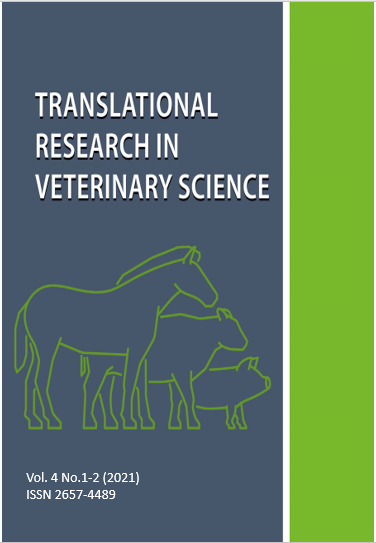BOVINE TUBERCULOSIS IN THE HISTORICAL ASPECT OF ITS ERADICATION IN POLAND BETWEEN 1882 AND 1975
DOI:
https://doi.org/10.12775/TRVS.2025.005Keywords
veterinary history, history of medicine, tuberculosis, bovine tuberculosis, Robert KochAbstract
Tuberculosis (TB) is a chronic pulmonary disease caused by different representatives of Mycobacterium. The fight against bovine TB has been implemented within the framework of the 'One Health’ concept. ‘One Health’ is based on cooperation between broad medical professions, including medicine and veterinary medicine to prevent prevalence of zoonotic diseases. Analysing the development of these disciplines throughout history, we can say that they common origin. Up to the second half of the 18th century, it was often the same people treating both humans and animals. Veterinary medicine diverged from medicine in the second half of the 18th century, after the first veterinary schools were established. However, it occurred that some diseases affecting humans and animals required close cooperation between medicine and veterinary medicine. At first, the link between human and cattle TB has not been made. Due to the chronic nature of TB, it usually took quite long between contact with the sick animal or its products and the onset of the disease. But, after Robert Koch attributed the origin of the disease to mycobacteria, the progress has been made in identification of the pathogenicity of human and bovine TB. Effective measures of limiting spread of TB had to combine treatment of infected people with eliminating the reservoirs of the germ, which were and are animals. Due to coordinated efforts within ‘One Health’, about a hundred years later, many countries were announced as TB-free.
References
1. Ziskind B., Halioua B. Tuberculosis in ancient Egypt. Revue des Maladies Respiratoires 2007;24;20,1227
2. Taylor G.M., Murphy E., Hopkins R., Rutland P., Christov Y. first report of Mycobacterium bovis DNA in human remains from the Iron Age. Microbiology 2007;153,1243
3. Gibbons A. Tuberculosis jumped from humans to cow, not vice versa. Science 2008;320;608
4. Sakula A. Robert Koch , Centenary of the Discovery of tubercle bacillus. 1882. Can. Vet.
J. 1983;24;127
5. Krajewska M., Lipiec M., Szulowski K. Występowanie gruźlicy bydlęcej w Polsce w latach 2009 – 2013. Życie wet. 2014;89;1020
6. http://www.efsa.europa.eu (06. 04. 2022)
7. Sobolewski J. Gruźlica bydła w Polsce w świetle poglądów dotyczących rozwoju choroby i jej zwalczania w latach 1882 – 1975. Wydawnictwo Naukowe UMK. Toruń 2020.
8. Bollinger O. Tuberculosis. Milch – Zeitung. 1899;27;424
9. Cyrkler H. O stosunku perlicy do gruźlicy u człowieka. Gazeta Lekarska 1903;2;35-40
10. Stryszak A. Studia epizoocjologiczne nad gruźlicą bydła w Polsce ze szczególnym uwzględnieniem próby tuberkulinowej śródskórnej. Medycyna Weter. 1947;3;462
11. Lipnicki J. Zwalczanie gruźlicy bydła w różnych krajach oraz w Polsce. Medycyna Weter. 1961;17,212
12. Sobolewski J. Profesor Odo Bujwid – od medycyny do weterynarii., Medycyna Weter. 2019;75;125 – 128
Downloads
Published
How to Cite
Issue
Section
License
Copyright (c) 2021 Jarosław Sobolewski

This work is licensed under a Creative Commons Attribution-NoDerivatives 4.0 International License.
Title, logo and layout of TR in VS are reserved trademarks of TR in VR.
Stats
Number of views and downloads: 2
Number of citations: 0



